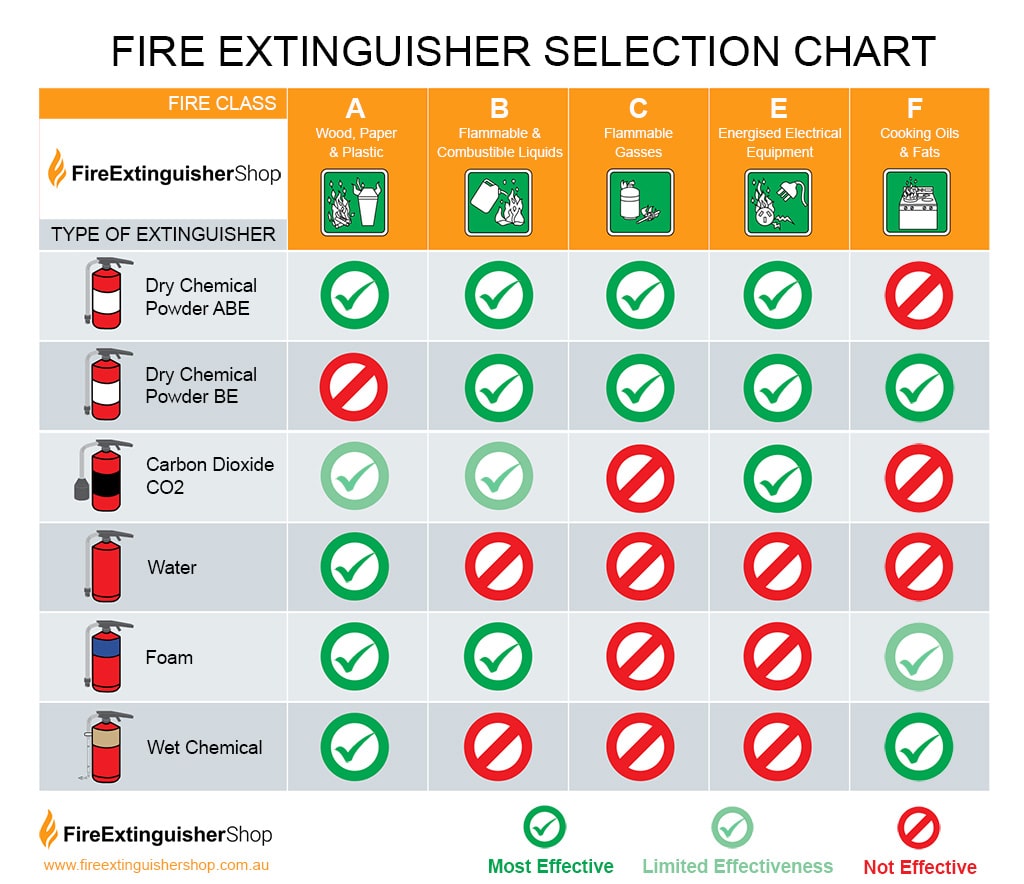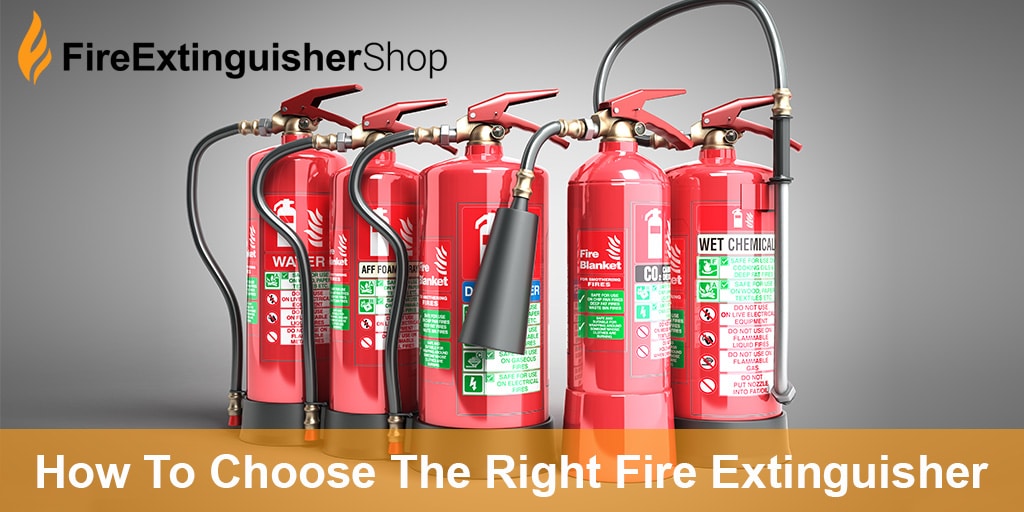How To Choose The Right Fire Extinguisher in Australia
Are you wondering what class of fire extinguisher you need for your home or business? Fire extinguishers can quickly put out small fires, but it’s important to understand the types of fire extinguishers in Australia and their uses so that you have the right one for the job.
What type of fire hazards are present?
You can determine what type of fires most likely to break out in your home or business based on the fire risks or hazards that are present. In most cases, fire hazards are combustible materials, flammable liquids such as oil or gas, or electrical equipment and tools. Once you know the fire hazards you can assign them to the standard fire classes and then select the appropriate extinguisher to use.
Classes of Fires
To choose the right type of fire extinguisher for your needs, it’s important to understand the six classes of fires. This is because not all fire extinguishers are rated to combat all types of fires.
- Class A – Combustible materials, including wood and paper
- Class B – Flammable liquids, including paint and petrol
- Class C – Flammable gases, including methane and butane
- Class D – Flammable metals, including lithium and potassium
- Class E – Fires involving electronics, including computers, televisions, and cell phones
- Class F – Fires caused by cooking oils, including lard and vegetable oils

Six Types of Fire Extinguishers
How do you decide what fire extinguisher to use in your business? There are six types of fire extinguishers, and they are all designed to put out different types of fires. To choose the right ones for your home or business, you’ll need to evaluate your risk of experiencing each type of fire and then purchase the correct ones for your needs.
1. Water
Water extinguishers put out fires using water. They can be identified by their all-red tank and lack of a colour band around the top. These extinguishers are only designed to only put out Class A fires involving combustible solid materials, like curtains, furniture, and paper. They should never be used to put out liquid, gas, chemical, grease, metal, or electrical fires. Using this extinguisher to put out flammable liquid fires can result in spreading the flammable liquid further, and using them on electrical fires can create a shock hazard.
2. Foam
Foam fire extinguishers can be used on Class A and B fires, meaning they can be used to put out fires involving combustible materials, like wood, textiles and paper, and flammable liquids, including paint and paint thinner. They have limited effect on Class F fires, which are grease fires. They should not be used to put out fires involving flammable gases or metals or fires involving electrical equipment. These extinguishers can be identified by their all-red body and the blue band near the top of the body.
3. ABE Dry Powder
ABE dry powder fire extinguishers can be used to put out Class A, B, C and E fires. This includes fires involving wood, textiles, paper, paint, petrol, flammable gases, and electronic equipment. These extinguishers should never be used to put out fires involving metals or cooking oils as it could make the fire worse. These extinguishers can be identified by their all-red body and white stripe near the top of the extinguisher body.
4. BE Dry Powder
BE dry powder extinguishers can be used to put out Class B and E fires, which are fires involving flammable liquids and electronic equipment. They also can be used on cooking oil fires and flammable gas fires. They should never be used to put out fires involving metals and they aren’t effective for fires with Class A flammable materials, like textiles and paper. Like the ABE dry powder extinguishers, these can be identified by the red body and white stripe. Since the canisters look extremely similar, it’s important to read further to make sure you are purchasing the correct dry powder extinguisher for your needs.
5. Wet Chemical
Wet chemical fire extinguishers can be identified by the red body and yellow stripe. They are designed to put out Class A and F fires, including fires involving wood, fabric, paper, and cooking oils. These should never be used to put out fires involving flammable liquids, gases, metals, or electronic equipment.
6. CO2 Extinguishers
CO2 extinguishers can be identified by their red body and black stripe. These extinguishers work best for putting our fires involving electronics. They have a limited effect on Class A and B fires and should never be used to put out Class C, and F fires.

What type of fire extinguisher is best for home use?
We recommend that all homes have at least one dry chemical powder fire extinguisher. These extinguishers can be used on fire classes A, B and E.
- Class A – Combustible materials, including wood and paper
- Class B – Flammable liquids, including paint and petrol
- Class E – Fires involving electronics, including computers and televisions
There are no Australian laws that make it compulsory to have a fire extinguisher in your standard residential home. It is always crucial to have the right equipment on hand to deal with typical house fires that you may encounter.
Dealing with Class C and Class D Fires
Class C fires involve combustible gasses and Class D fires involve metals. It’s important to note that these require specialised fire extinguishers and that the standard extinguishers sold in Australia aren’t rated to combat these types of fires.
How to Store Your Fire Extinguisher
Once you have your fire extinguishers, it’s important to store them in a location that is easy to reach but not too close to areas that may be prone to catching on fire. This is because the fire extinguisher may become too hot to handle or unstable if exposed to direct fire. Adding signs help identify where the fire extinguishers are in your building.
Fire Extinguisher Maintenance
All fire extinguishers need to be checked every 6 months by a professional, and you should regularly check the gauge yourself to make sure it is properly charged and ready for use. If you have dry powder extinguishers, it’s important to shake them and invert them regularly to prevent the powder from settling to the bottom of the canister, which can affect its performance.
Using Your Fire Extinguisher
It’s important to stay familiar with the procedures on how to use each type of fire extinguisher so that you’re ready if there is a fire inside or outside your building. Additionally, you should stay familiar with the types of fire extinguishers and what types of fires they are designed to put out. Using the wrong extinguisher on a fire can result in making the fire worse.
Having the right fire extinguishers in your home or business can help improve safety. However, it’s important to purchase the correct extinguishers for your needs and familiarize yourself with their operation.
